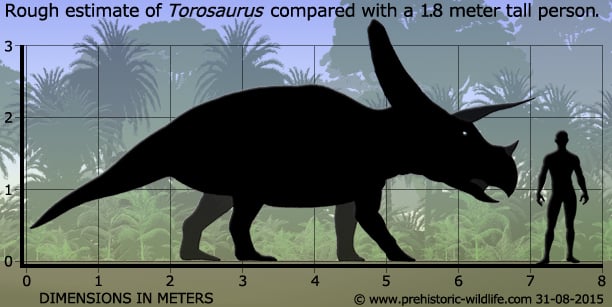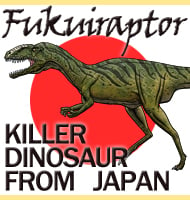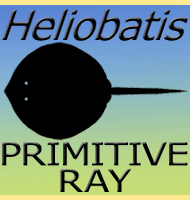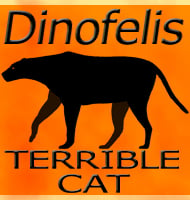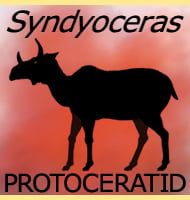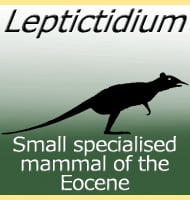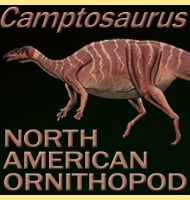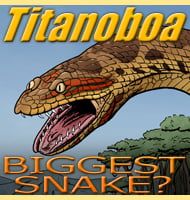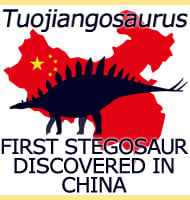In Depth
Torosaurus was first named upon the description of two partial skulls by Othniel Charles Marsh all the way back in 1891, two years after he had named the much more famous Triceratops. The most common mistake regarding the name Torosaurus is the meaning, with many people misquoting it as meaning ‘bull lizard’ after the Spanish word ‘toro’ which means bull. However, Spanish is not a commonly used language in establishing binomial names, and in the late nineteenth century the two most commonly used languages were Latin and particularly Ancient Greek. In this respect Torosaurus is based upon the Ancient Greek words ‘toreo’, which means ‘perforate’ or ‘to pierce’ and ‘sauros’ which means ‘lizard’.
Torosaurus was a large ceratopsian dinosaur that lived on the North American continent towards the end of the Cretaceous. Like with others of its kind, Torosaurus was an herbivore cropping low growing vegetation and may have lived in social groups. Torosaurus is noted for having one of the largest skulls of not just any dinosaur but any land animal. Most of this is physical length formed by the neck frill which grows out from the back of the skull, which covers the neck, but was almost certainly for display as opposed for defence. The defence theory is no longer thought to be a primary function given to save weight the bone of the frill was relatively thin and perforated (clue is in the name!) with large openings. However, new skulls attributed to the genera Pentaceratops and Titanoceratops seem to be even larger, suggesting that Torosaurus while large may not have had ‘the’ biggest skull. In addition to this a Triceratops skull measuring 2.8 meters long and nicknamed Lung Wong (Dragon King) is now known.
Currently the only valid species of Torosaurus is the type species T. latus, though as we will see, this may in fact be synonymous with Triceratops. A former species T. gladius has now been ascertained to be synonymous with the type species. Fossils originally attributed as a species of the genus Arrhinoceratops, A. utahensis, have now been credited by some researchers as representing a species of Torosaurus. However again, the debate about synonymy with Triceratops has cast this in doubt. Around 2009-2010 new study into the skulls of Torosaurus and Triceratops by John Scanella and John R. Horner (better known as Jack Horner) led to the idea that the skulls of Torosaurus were actually the fully mature forms of Triceratops. This would mean that Torosaurus was not only a synonym, but reconstructions of Triceratops for over a hundred years had been slightly wrong, with a neck frill far too short. At the time this was big news with most online news outlets and many printed newspapers covering the story, and many erroneously reporting that ‘Triceratops never existed’, though if the theory were true then it would technically be the other way around given that Triceratops was named first.
The theory is quite detailed but the finer points are this. Ceratopsian dinosaur bones are known to be composed of large amounts of metaplastic bone, and as an animal matures this metaplastic bone can change in both size and shape (its why little baby ceratopsian dinosaurs have short stubby neck frills, they wouldn’t fit into the egg otherwise!). Scanella and Horner noted that all the known specimens of Torosaurus were of very old and mature adults, while those of Triceratops were of sub adults and young adults. They also noted that while known Triceratops skulls don’t have holes in the neck frill, they do have areas of thin bone. Their theory was that Torosaurus skulls represented the true adult form of fully mature Triceratops, with the thin areas of bone giving way to the holes that we see in Torosaurus neck frills. This also led to the phrase ‘toromorph’ to describe the Torosaurus skulls as fully mature Triceratops skulls.
The theory was however was not perfect, and there were still some areas that were blank. First it’s that even after over a hundred years of study and dozens of skulls, no actual transitional form showing the change of a Triceratops skull to the toromorph form had been found. However in 2007 a ceratopsian dinosaur skull was used to establish a new ceratopsian genus called Nedoceratops. Scanella and Horner considered this skull to possibly be a missing transitional form given that it appeared to show the development of holes and reduction in nasal horn on an otherwise Triceratops skull. Scanella and Horner also addressed the issues of epoccipitals, the osteoderms that grow along the edges of the neck frill. Triceratops skulls average around five epoccipitals with one centred along the midline of the skull. Torosaurus however are noted for having ten to twelve epoccipitals with none centred on the midline. Scanella and Horner noted however that the number of epoccipitals in some Triceratops skulls does vary from the norm, and at least one has no midline epoccipital. Scanella and Horner also proposed that the epoccipitals in Triceratops may have each split in half allowing for a ten count as seen in some Torosaurus.
Since their theory was published, other palaeontologists have not recognised the study as correct, and indeed some have even published counter studies to test this theory with the conclusion that Torosaurus skulls can’t be those of Triceratops. To start Nedoceratops was re-described in 2011 by Andrew Farke who noted that the holes in the Nedoceratops holotype were surrounded by thicker bone growths, leading him to conclude that the holes were a result of injury and/or disease with possible infection. Therefore according to this study, the holes in the Nedoceratops skull were not formed by the beginning of a new growth stage, and so it cannot be heralded as a transitional form. Since this Scanella and Horner have conceded that the Nedoceratops skull is not an ideal candidate for a transitional form but yet they considered it to represent a diseased Triceratops and not a distinct genus.
In 2012 Nicholas Longrich and D. J. Field tested Scanella’s and Horner’s theory upon the basis of three predictions that should all be proven true if correct. First is that both Triceratops and Torosaurus should being found from the same locations, but in depth study of the currently known locations of both genera show that while close, very little overlap occurs. However the fossil record will never be complete, and only a relatively rare few animals will be preserved. Older individuals may have also shifted to different parts within the ecosystem, and the difference in the length of the snout of Torosaurus as opposed to Triceratops may indicate a different feeding and by extension ecological placement. In short however, this information cannot conclusively prove or disprove Scanella’s and Horner’s theory.
Second is that all Torosaurus skulls should be of very old and mature individuals while those of Triceratops should be no older than just beyond sub adult. Horner did state that all Triceratops skulls that were tested had a sub adult bone structure, however, not all known Triceratops skulls were tested. When Triceratops skulls from other locations were investigated many were concluded to be older than sub adult, and some seemingly quite old, with at least ten being of the same level of maturity as older Torosaurus. Also, while all the Torosaurus skulls were thought to be of very old individuals, at least two Torosaurus skulls are now known to have come from much younger individuals, with a lack of fusion in some parts of the skull indicating that they themselves were not much past the sub adult level when then died. These younger Torosaurus skulls already show an extended neck frill with established openings far beyond that of similarly aged Triceratops. Furthermore, one of these skulls is also missing the epoccipitals, showing that this individual was so young when it died that the epoccipitals had not even fused to the main neck frill. In the second part, not only is there no evidence to establish an age/maturity difference, but the available fossils seem to support the opposite.
The third prediction was that there should be at least some transitional forms that show a Triceratops skull growing into the toromorph. At the time of writing there are no known skulls that show us this change happening, and again, what fossils we do have seem to show that Triceratops and Torosaurus should be separate. Firstly, while Triceratops skulls often show slight depressions, these seem to be surrounded by a slight thickening of bone, while the holes in Torosaurus are surrounded only by thin bone. Also, the depressions in Triceratops while mostly on the parietal bone of the skull also extend to the squamosal bone. In Torosaurus the holes are only on the parietal bone. Out of these three predictions proposed by Longrich, one is neutral, neither confirming of denying the theory, while two conclude that Triceratops and Torosaurus are separate species.
The differences in the number of epoccipitals has also been discredited. Firstly, the numbers of epoccipitals between members of the same species has been known to vary, meaning that identification of a ceratopsian species by counting epoccipitals can only be used as a very rough guide at best. At the time of writing there are no known cases of epoccipitals doubling themselves by splitting. If anything, the epoccipitals should proportionately increase in size with age.
Although ceratopsian dinosaur skulls are known to have metaplastic bone which changes, it has been noted that due to the age of some Triceratops skulls, this bone would have already matured and hardened to hold its shape. If these individuals were to be capable of forming a toromorph skull, this bone would have had to have been rejuvenated to be able to morph again, before finally setting once more into the new form. This is a sequence that currently has no known precedence, and is seen as further support to keep Torosaurus and Triceratops separate.
2013 saw the publication of another paper, this time by Andrew Farke and Leonardo Maiorino, this time involving morphometric research upon the two main Triceratops species, T. horridus and T. prorsus, Torosaurus and Nedoceratops. The conclusions were that T. horridus and T. prorsus overlapped one another in development, as would be expected within two species of the same genus. Torosaurus data was limited due to the much lower number of known Torosaurus remains when counted against Triceratops, but those that were able to be tested showed that the Torosaurus skulls did not overlap with those of Triceratops. When Nedoceratops was included, it was shown that it could not be a transitional form between Triceratops and Torosaurus. One interesting side theory from this study however is that Triceratops and Torosaurus could form a chronospecies. If correct then this would mean a direct familial relation between Triceratops and Torosaurus with them both being on the same line.
It should also be noted however that fully grown Torosaurus seem to have reached total lengths of just over seven and a half meters. Large Triceratops by comparison are known to have ranged between eight and nine metres in length. It would be unprecedented for a large land vertebrate to grow large and then actually reduce in body length as it matured. The largest Triceratops skulls are also known to have reached up to two hundred and eighty centimetres in length (length of the specimen nicknamed Lung Wong, a.k.a Dragon King), just a little bit longer that large Torosaurus skulls. The discovery of such a large skull counts a lot against the theory that Triceratops grew into toromorphs to save on skull weight, as here is one individual that obviously didn’t have to.
So what is likely to happen in the future? At the time of writing there are three distinct possibilities. One is that future research and discoveries will prove that Torosaurus and Triceratops are one and the same, and if so then this will mean that the Torosaurus genus is attributed to one of the Triceratops species. Two is that Torosaurus is proven to not represent a mature form of Triceratops, but may still be moved to the Triceratops genus as a separate species to those we currently know. Third, Torosaurus and Triceratops continue to be regarded as distinct species and genera, and things go on like they have done for over a hundred years now. Indeed, most palaeontologists and researchers continue to regard Triceratops and Torosaurus as distinct genera.
Further Reading
- A skull of Torosaurus from South Dakota and a revision of the genus - Proceedings of the Academy of Natural Sciences of Philadelphia, 99: 93–106. - E. H. Colbert & J. D. Bump - 1947. - Tyrannosaurus and Torosaurus, Maastrichtian dinosaurs from Trans-Pecos, Texas. - Journal of Paleontology 50(1): 158-164. - D. A. Lawson - 1976. - The Ceratopsian dinosaur Torosaurus from the Upper Cretaceous McRae Formation, Sierra County, New Mexico. - New Mexico Geological Society Guidebook, 49th Field Conference, Las Cruces County II. - S. G. Lucas, G. H. Mack & G. W. Estep - 1998. - A review of Torosaurus (Dinosauria: Ceratopsidae) specimens from Texas and New Mexico. - Journal of Vertebrate Paleontology, 22: 52A. - A. Farke - 2002. - Redescription of the ceratopsid dinosaur Torosaurus utahensis (Gilmore, 1946) and a revision of the genus. - Journal of Paleontology 79:564-582. - R. M. Sullivan, A. C. Boere & S. G. Lucas - 2005. - Attributes of the ceratopsian dinosaur Torosaurus, and new material from the Javelina Formation (Maastrichtian) of Texas. - Journal of Paleontology 82(6): 1127-1138. - Rebecca K. Hunt & Thomas M. Lehman - 2008. - And then there was one: synonymy consequences of Triceratops cranial ontogeny. - Journal of Vertebrate Paleontology 29: 177A. - J. Scanella - 2009. - Torosaurus Marsh, 1891, is Triceratops Marsh, 1889 (Ceratopsidae: Chasmosaurinae): synonymy through ontogeny . - Journal of Vertebrate Paleontology, 30(4): 1157 - 1168. - J. Scanella & J. R. Horner 2010. - Nedoceratops: An Example of a Transitional Morphology. - PLoS ONE 6 (12). - John B. Scanella, John R. Horner & Leon Claessens - 2011. - Anatomy and Taxonomic Status of the Chasmosaurine Ceratopsid Nedoceratops hatcheri from the Upper Cretaceous Lance Formation of Wyoming, U.S.A. PLoS ONE 6 (1). - A. A. Farke (Leon Claessens, ed) - 2011. - Torosaurus is not Triceratops: Ontogeny in chasmosaurine ceratopsids as a case study in dinosaur taxonomy. - PLoS ONE 7 (2): e32623. - N. R. Longrich & D. J. Field - 2012. - Is Torosaurus Triceratops? Geometric Morphometric Evidence of Late Maastrichtian Ceratopsid Dinosaurs. - PLoS ONE 8 (11): e81608. - Leonardo Maiorino, Andrew A. Farke, Tassos Kotsakis, Paolo Piras & Richard J. Butler - 2013.
